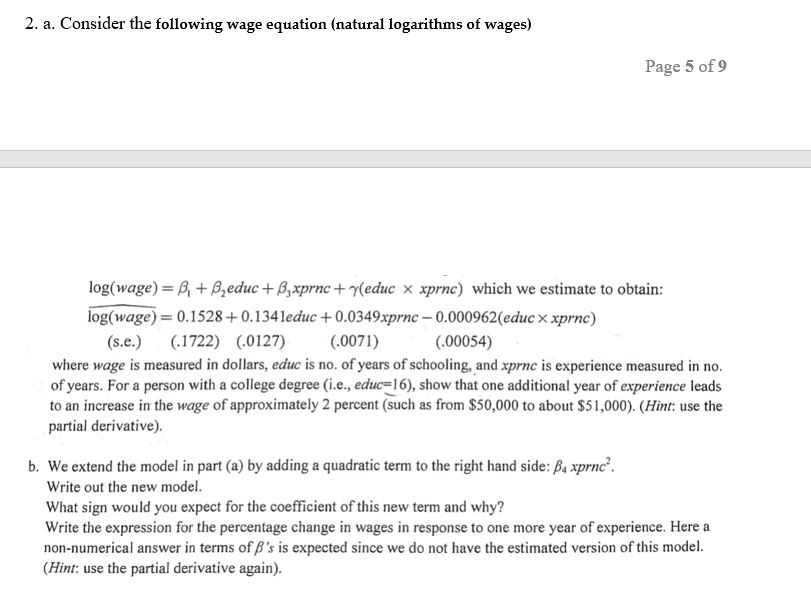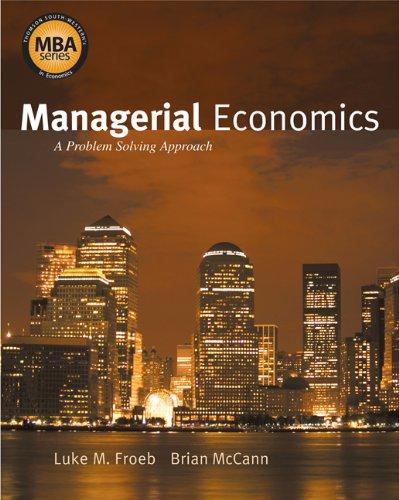Answered step by step
Verified Expert Solution
Question
1 Approved Answer
This is a economics question which require students to use partial derivative. 2. a. Consider the following wage equation (natural logarithms of wages) Page 5
This is a economics question which require students to use partial derivative.

2. a. Consider the following wage equation (natural logarithms of wages) Page 5 of 9 log(wage) = A + Aeduc+ ,xprnc x xprnc) which we estimate to obtain: log(wage) = O. 1528 + O. 134 leduc + 0.0349xprnc 0.000962(educ x xprnc) (s.e.) (.1722) (.0127) (.0071) (.00054) where wage is measured in dollars, educ is no. Of years of schooling, and XPrnC is experience measured in no, of years. For a person with a college degree (i.e educ=16), show that one additional year of experience leads to an increase in the wage of approximately 2 percent (such as from $50,000 to about $51 ,000). (Hint: use the partial derivative). b. We extend the model in part (a) by adding a quadratic term to the right hand side: xprnc2. Write out the new model. What sign would you expect for the coefficient of this new term and why? Write the expression for the percentage change in wages in response to One more year Of experience. Here a non-numerical answer in terms Of" 's is expected since we do not have the estimated version Of this model. (Hint: use the partial derivative again).
Step by Step Solution
There are 3 Steps involved in it
Step: 1

Get Instant Access to Expert-Tailored Solutions
See step-by-step solutions with expert insights and AI powered tools for academic success
Step: 2

Step: 3

Ace Your Homework with AI
Get the answers you need in no time with our AI-driven, step-by-step assistance
Get Started


